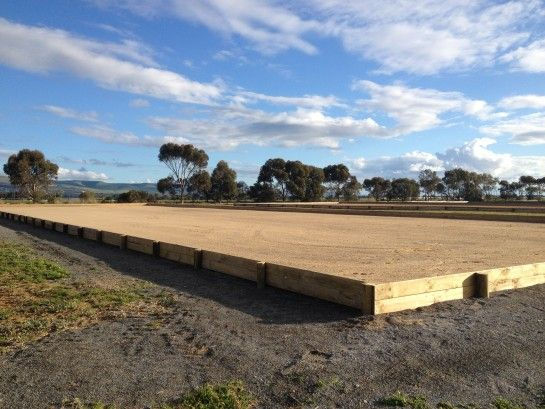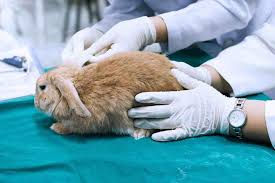Choosing the Best Horse Riding Arena Surface for Australian Conditions
- Loz
- Jul 28
- 7 min read
Updated: Aug 4

Comparing Sand, Bounce, and Treadlite Surfaces for Low-Maintenance, All-Weather Performance
When it comes to building a horse riding arena in Australia, your choice of surface can make a world of difference. With our country’s diverse climate—from dry heatwaves to sudden downpours—it’s crucial to select a footing that offers good drainage, low maintenance, and consistent rideability. In this guide, we’ll compare three popular arena surfaces: sand, Bounce, and Treadlite. We’ll also cover how to build the best base for drainage, outline maintenance routines, and recommend Australian arena rakes to keep your surface in tip-top shape.
Why Arena Surface Choice Matters in the Aussie Climate
Australia’s climate poses unique challenges for horse arenas. In many regions, water is scarce, making surfaces that require minimal watering highly desirable. Arena surfaces also need to withstand UV exposure, heavy use, and the risk of flooding during storms. Choosing the right surface and base ensures safety, performance, and less time spent on upkeep—so you can spend more time riding and less time raking.
Importance of Depth and Firmness in a Horse Riding Arena

The depth and firmness of a horse riding arena play a crucial role in the health and performance of horses. Here are some key reasons why these factors are important:
1. Joint Health
The right depth and firmness help absorb shock, reducing the impact on a horse's joints. A surface that is too hard can lead to joint stress and potential injuries over time.
2. Stability and Balance
A well-prepared arena surface provides stability, allowing horses to maintain their balance during various movements. This is essential for both training and competition, as it helps prevent falls and injuries.
3. Muscle Development
The appropriate depth encourages the horse to engage its muscles effectively. A surface that is too soft may hinder muscle development, while one that is too firm can lead to strain.
4. Performance Optimization
Horses perform better on surfaces that offer the right combination of depth and firmness. This allows them to execute movements with precision and agility, enhancing their overall performance in events.
5. Recovery and Rehabilitation
For horses recovering from injuries, the arena's surface can significantly impact their rehabilitation. A softer surface may be beneficial initially, while gradually introducing firmer ground can aid in building strength.
6. Safety Considerations
Ensuring that the arena has the appropriate depth and firmness minimizes the risk of slips and falls, creating a safer environment for both horse and rider.
In summary, the depth and firmness of a horse riding arena are vital for maintaining the health and performance of horses. Properly designed surfaces contribute to joint health, stability, muscle development, performance optimization, recovery, and overall safety.
Compaction in the Horse's Hooves
When selecting a suitable surface for your horse's environment, it is crucial to consider not only the comfort and safety of the horse but also the practicality of the surface in relation to the horse's hooves. One important factor to keep in mind is the need for a surface that will not stick to or compact in the horse's hooves.
A surface that is prone to sticking can create significant issues for the horse, leading to discomfort and potential injury. For instance, mud, wet sand, or certain types of soft soil can easily accumulate in the hooves, causing the horse to experience an uneven gait or even lameness as it struggles to move freely. Additionally, when debris sticks to the hooves, it can lead to an increased risk of thrush or other hoof-related ailments, as moisture and bacteria become trapped in the hoof.
Ultimately, when considering the best surface for your horse, it is important to take into account not only the immediate comfort of the horse but also the long-term implications for its hoof health. By choosing a surface that minimizes sticking and compaction, you can help ensure that your horse remains happy, healthy, and able to perform at its best.
Overview of Arena Surfaces: Sand, Bounce, and Treadlite
Surface Type | Pros (+ves) | Cons (-ves) | Best For |
Readily available, affordable, good drainage, easy to top up or replace. Suitable for most disciplines. | Can compact or blow away in strong winds, may need regular watering in hot, dry areas, and can become deep if not maintained. | Versatility and affordability but requires a lot of watering and grading to address compaction and dust. | |
Improved stability and consistency, reduced dust and watering needs, holds shape well under heavy use. | Higher upfront cost, may require professional installation, some products may not be UV stable. | Arenas needing year-round performance with minimal maintenance and watering. | |
Excellent shock absorption, very low dust, minimal watering required, UV and weather resistant, eco-friendly (recycled materials). | More expensive, can become hot in direct sun, some horses may find footing unusual at first. | Riders seeking cushioning, minimal dust, and the lowest maintenance, especially in dry or water-restricted areas. |
Best Base Setup: Step-by-Step Guide for Drainage and Longevity

Site Selection & Preparation: Choose a slightly elevated site to prevent water pooling. Remove all organic matter and debris.
Sub-base Compaction: Compact the natural ground with a roller or plate compactor to create a stable foundation.
Geotextile Layer: Lay a quality geotextile membrane to prevent mixing of base and sub-base, and to aid drainage.
Retaining Boards: Installing retaining boards around the perimeter of the arena helps to contain the footing material and prevent it from migrating out of the riding arena.
Base Layer: Spread 100–150 mm of compacted road base or blue metal (crusher dust) for stability and drainage. Slope the base 1–2% from the centre to the edges for runoff.
Drainage Solutions: Install perimeter drains or French drains if your site is prone to flooding. Ensure water can exit the arena quickly.
Surface Layer: Add your chosen arena surface (sand, Bounce, or Treadlite) to a depth of 20–40 mm, depending on discipline and local conditions.

Proper base preparation is the foundation of a low-maintenance, all-weather arena. Skimping here can lead to costly repairs and constant waterlogging.
Depth of Each Layer in a Horse Arena
When constructing a horse arena, the depth of each layer is crucial for ensuring optimal performance and safety for both horse and rider. Below is a breakdown of the typical layers found in a horse arena, with a specific focus on the ridden layer.

1. Sub-Base Layer
The sub-base layer, usually made of compacted gravel or crushed stone, provides drainage and stability. Its depth typically ranges from 100-150mm.
2. Base Layer
The base layer is often composed of a mix of sand and finer materials, designed to create a solid foundation. This layer generally has a depth of 100-150mm as well.
3. Ridden Layer
The ridden layer is the surface on which horses perform. This layer is crucial for providing the right amount of cushioning and traction. The depth of the ridden layer typically ranges from 20 to 40mm, depending on the type of footing material used and the specific needs of the horses.
Factors Influencing the Ridden Layer Depth
Type of Footing: Different materials (e.g., sand, rubber, fiber) can affect the ideal depth.
Use of the Arena: Whether the arena is for jumping, dressage, or general riding may dictate the necessary depth.
Climate and Weather: Areas with heavy rainfall may require a deeper layer for better drainage.
Overall, the right depth of each layer, particularly the ridden layer, is essential for creating a safe and effective riding surface.
Low Maintenance Strategies for Dry Climates
Choose the right surface: Bounce and Treadlite surfaces retain moisture better and require far less watering than plain sand.
Install windbreaks: Strategic planting or fencing can reduce surface drying and sand blow-away.
Consider surface additives: Products like wax, fibre, or polymer binders can stabilise sand and reduce dust.
Water harvesting: Collect roof runoff to water your arena if needed, but with Bounce or Treadlite, you’ll need far less.
Regular raking: Keeps the surface level and prevents compaction or deep spots, reducing the need for frequent surface replacement.
Arena Maintenance Instructions: Surface-by-Surface Routine
Sand Arenas
Drag or rake the surface 2–3 times a week to keep it even and prevent compaction.
Make sure you use different raking patterns to maintain a consistent surface and reduce un-even pockets from occurring.
Water as needed—early morning or late arvo is best to minimise evaporation.
Top up sand annually or as required, especially if you notice thinning or hard patches.
Bounce Arenas
Rake weekly to maintain a consistent surface and break up any crusting.
Make sure you use different raking patterns to maintain a consistent surface and reduce un-even pockets from occurring.
Check for worn areas and patch with matching Bounce material as needed.
Minimal watering—usually only during extreme heat or drought conditions.
Treadlite Arenas
Rake every 1–2 weeks, depending on use, to redistribute material and maintain cushion.
Make sure you use different raking patterns to maintain a consistent surface and reduce un-even pockets from occurring.
Monitor for migration of material to the edges and redistribute as needed.
No watering required; just keep the surface free of debris and weeds.
Recommended Arena Rakes: Australian Products
EquiRake Pro Arena Drag – Designed for Australian conditions, suitable for sand, Bounce, and synthetic surfaces.
OzRake Arena Groomer – Adjustable tines and leveller, made in Australia.
ArenaMate Pro – Heavy-duty, works with a ute or tractor.
All above rakes are locally available and well-suited for maintaining sand, Bounce, and Treadlite surfaces under Australian conditions.

Recommended Arena Installers
When planning the construction of an arena, selecting the right installers for each phase is crucial to ensure quality and durability. Below are recommendations for arena installers specializing in site preparation, base installation, and surface application.
1. Site Preparation Installers
GroundWorks: Specialises in grading and drainage solutions to ensure proper water management.
SitePrep: Offers comprehensive site preparation including excavation and soil stabilisation.
2. Base Installation Contractors
Platinum Base Builders Ltd: Experts in creating a solid foundation with high-quality materials tailored to the arena's purpose.
Australian Horse Arenas: Focuses on the installation of various base types, including sand, gravel, and composite materials.
3. Surface Application Specialists
ProEquestrian Surfaces: Renowned for their wide range of surface options, from synthetic to natural materials, catering specifically to the needs of horse arenas across Australia.
Elite Arena Surfaces: Offers specialised surfaces designed for specific equestrian disciplines such as dressage, show jumping, and eventing, ensuring optimal performance in Australian conditions.
Equestrian Services Australia: install indoor and outdoor arenas, access roads and landscaping.
Choosing experienced installers in each of these areas will contribute significantly to the success and longevity of your arena project. Please research this thoroughly before making a decision that suits you. Just remember, the cheapest might not be the best from a long-term perspective - especially on your horse's soundness.
Conclusion: Final Recommendations
For Australian horse owners, the right arena surface can make all the difference in ride quality, safety, and maintenance workload. Sand is affordable and versatile but needs more upkeep and watering. Bounce surfaces offer stability and lower maintenance, while Treadlite is ideal for those seeking the lowest upkeep and minimal watering—especially in water-scarce or drought-prone regions.
Investing in a well-drained base, choosing a surface tailored to your local climate, and using the right Australian-made maintenance tools will ensure your arena stays rideable year-round with minimal fuss. Happy riding!




Comments